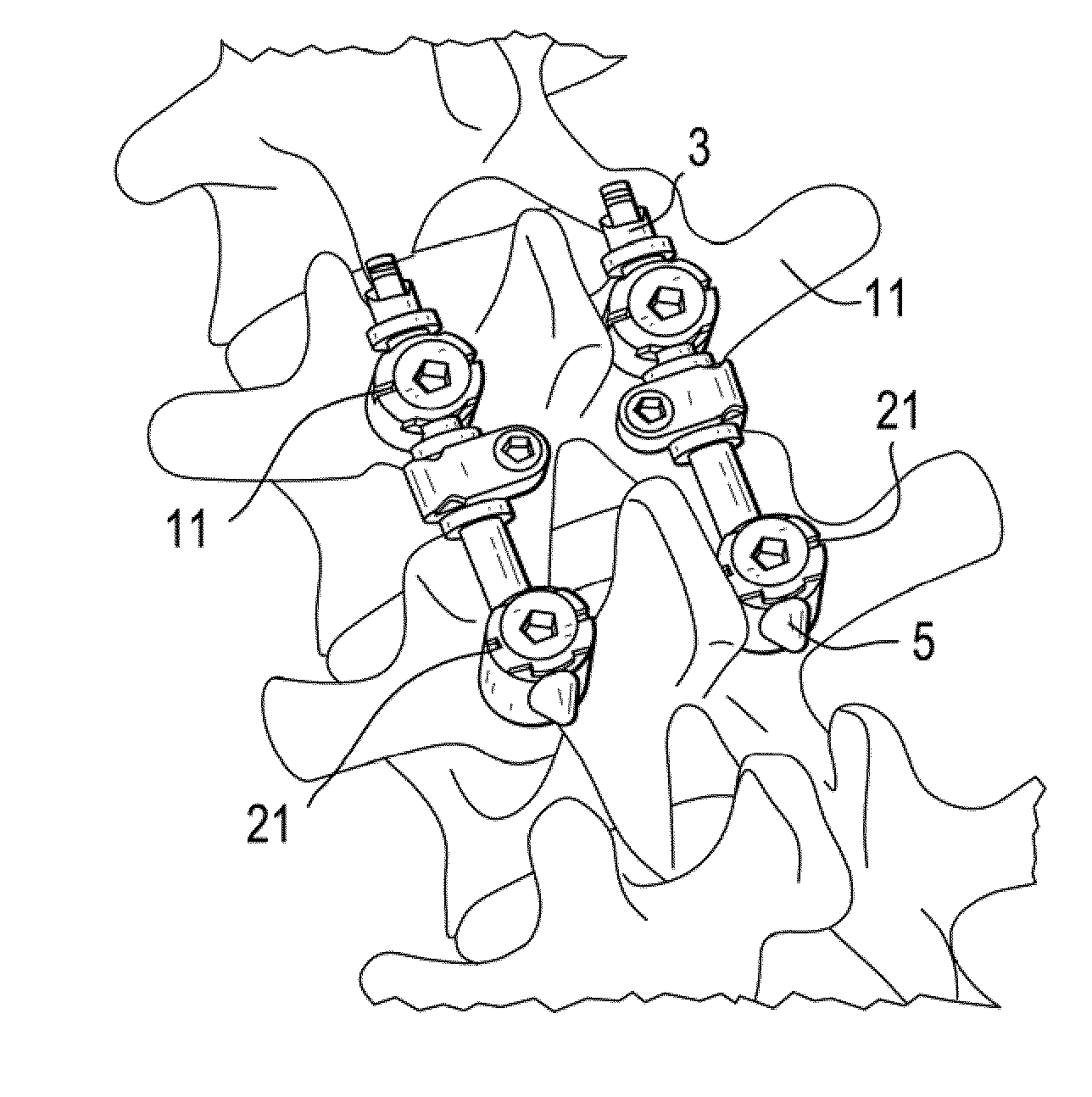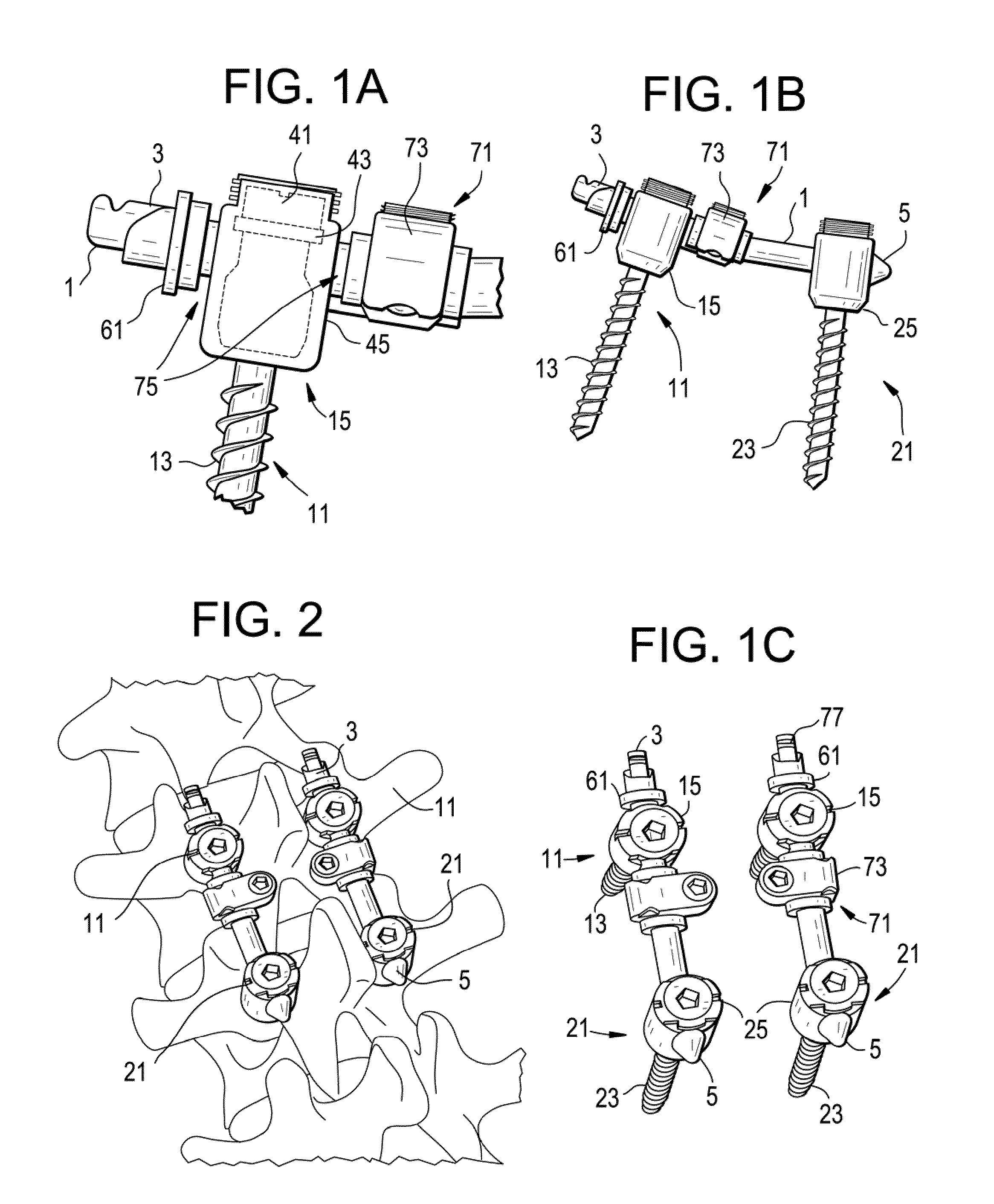Posterior Dynamic Stabilization Device Having A Mobile Anchor
a dynamic stabilization device and mobile technology, applied in the field of posterior dynamic stabilization devices, can solve the problems of further damage, limited use of caps, and disadvantages of caps, and achieve the effects of less translational motion, less translational motion, and less overload of adjacent levels
- Summary
- Abstract
- Description
- Claims
- Application Information
AI Technical Summary
Benefits of technology
Problems solved by technology
Method used
Image
Examples
Embodiment Construction
[0060]Now referring to FIGS. 1a-1c, in one preferred embodiment of the invention, there is provided a posterior dynamic spinal stabilization system, comprising:[0061]a) a spinal rod 1 having a first end 3 used as a guide for a mobile anchor and a second end 5,[0062]b) a mobile anchor 11 having i) a shank 13 and ii) a rod-receiving portion 15 containing a bearing insert 45(or “bearing”) adapted to mate to the first end of the rod and the head of the shank, thereby enabling translation along the rod and pivoting about the rod,[0063]c) a fixed anchor 21 having i) a shank 23 and ii) a rod-receiving portion 25 adapted to lock to the second end of the rod.[0064]d) a first motion-limiting stop 61 positioned on the rod at a location superior to the mobile anchor, and[0065]e) a second motion-limiting stop 71 positioned on the rod at a location inferior to the mobile anchor and comprising a polymeric bumper 73.
[0066]Now referring to FIG. 1a, gaps 75 are provided along the rod between the stop...
PUM
 Login to View More
Login to View More Abstract
Description
Claims
Application Information
 Login to View More
Login to View More - R&D
- Intellectual Property
- Life Sciences
- Materials
- Tech Scout
- Unparalleled Data Quality
- Higher Quality Content
- 60% Fewer Hallucinations
Browse by: Latest US Patents, China's latest patents, Technical Efficacy Thesaurus, Application Domain, Technology Topic, Popular Technical Reports.
© 2025 PatSnap. All rights reserved.Legal|Privacy policy|Modern Slavery Act Transparency Statement|Sitemap|About US| Contact US: help@patsnap.com



